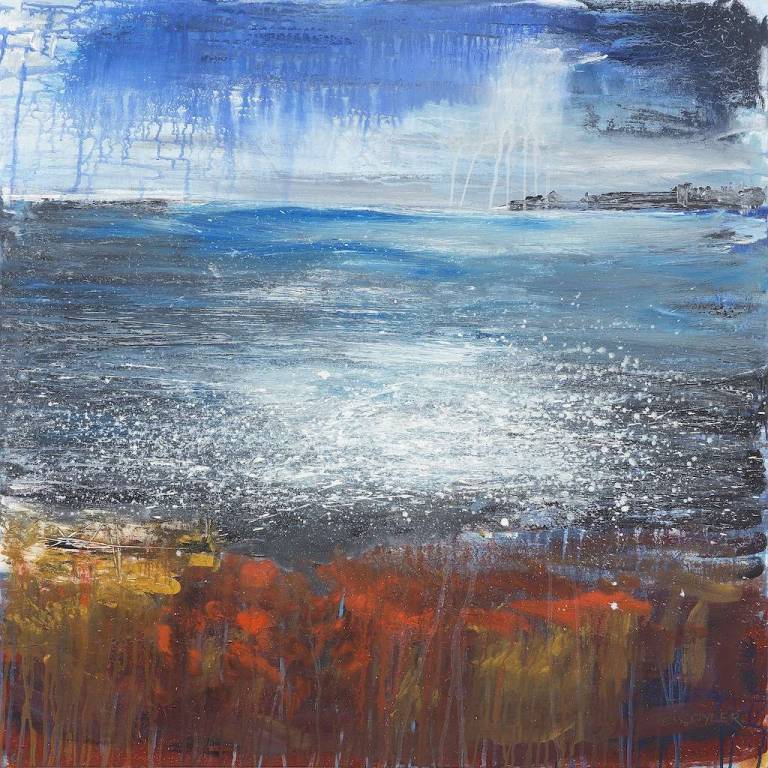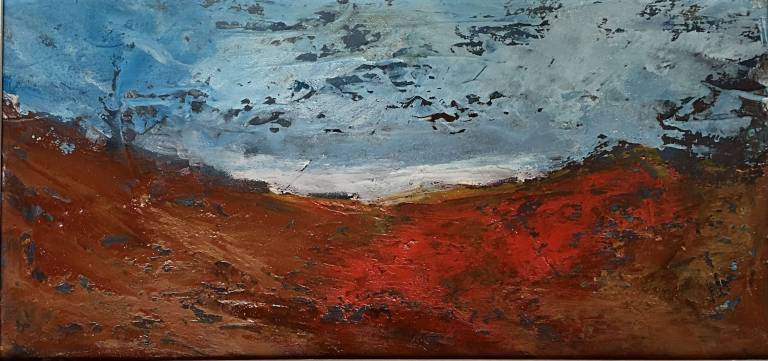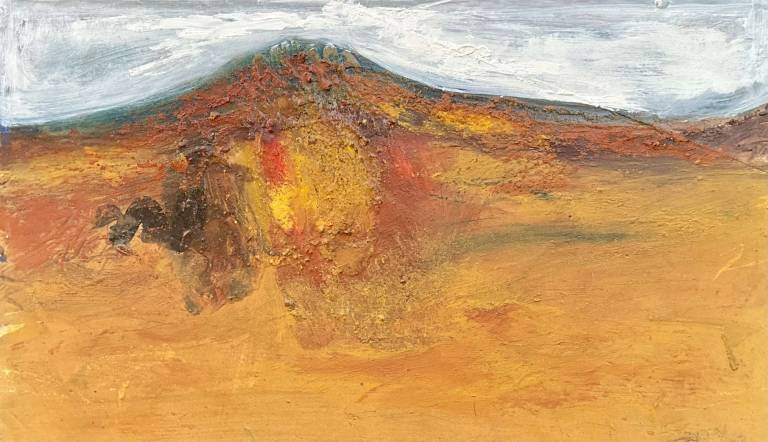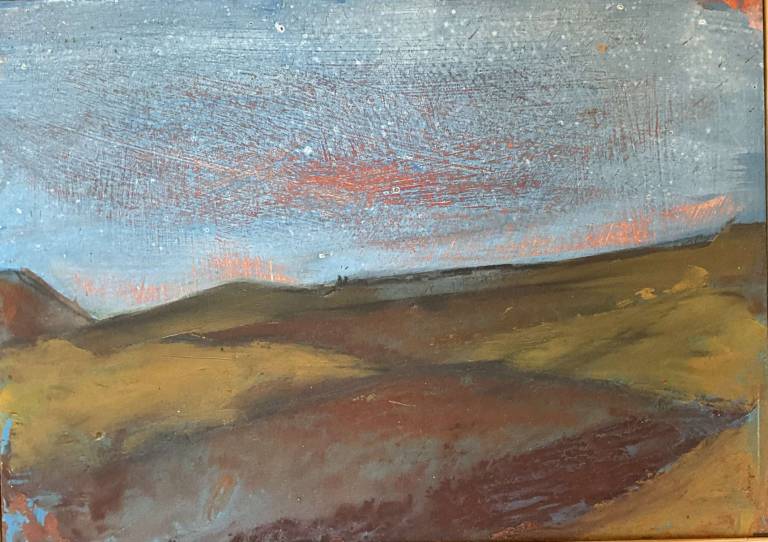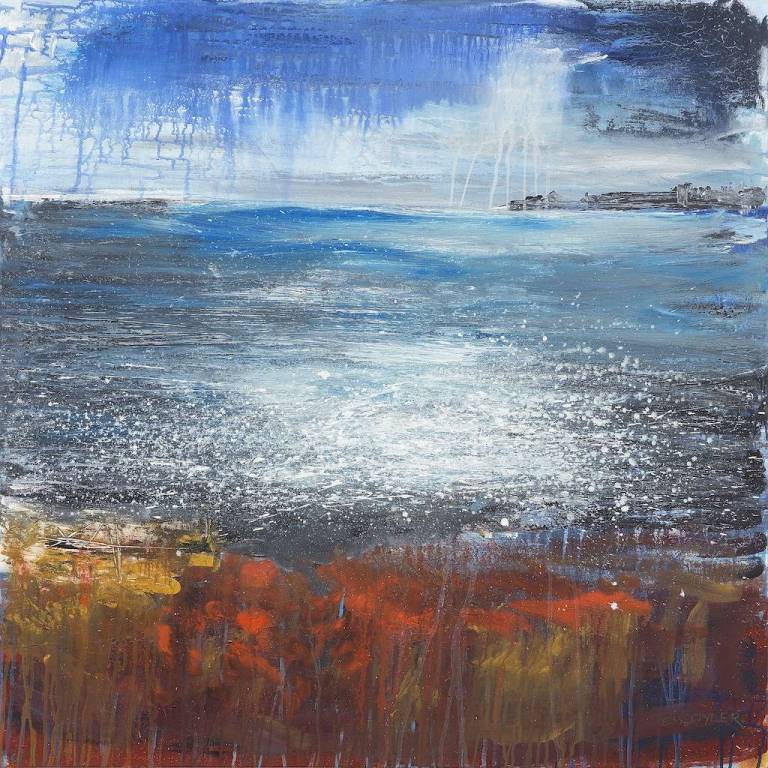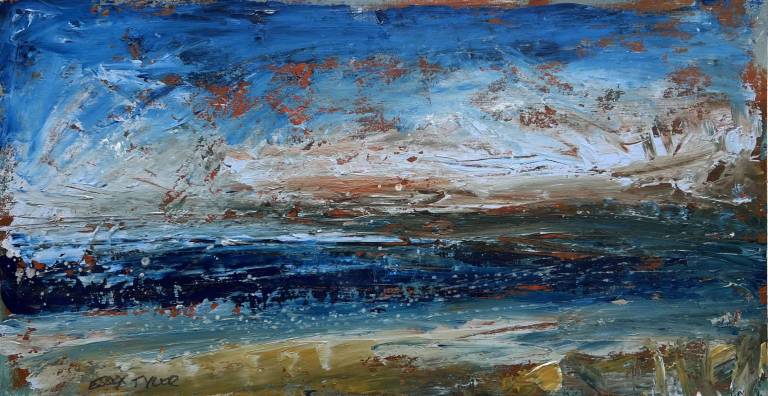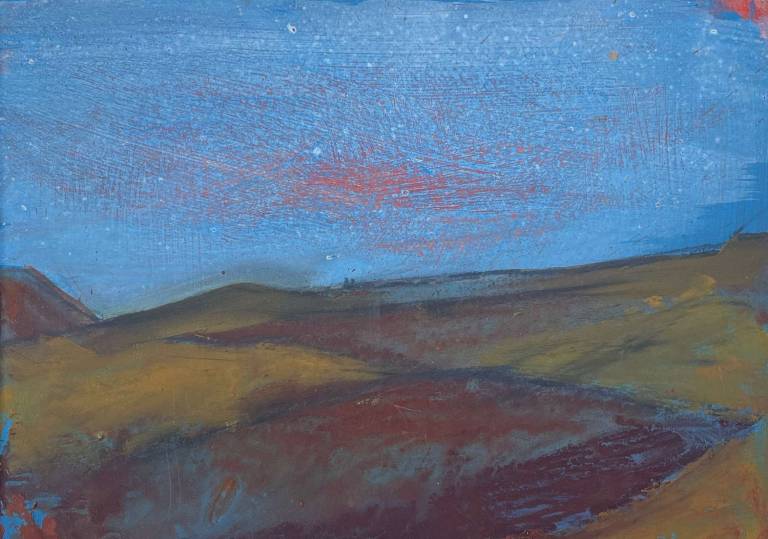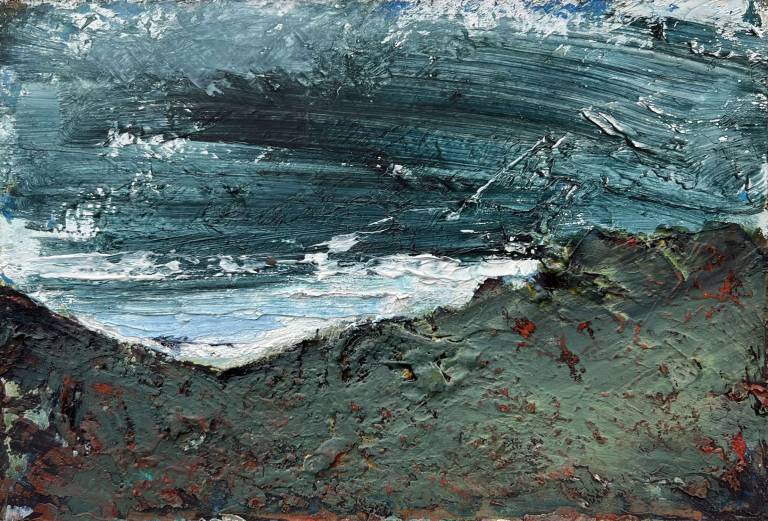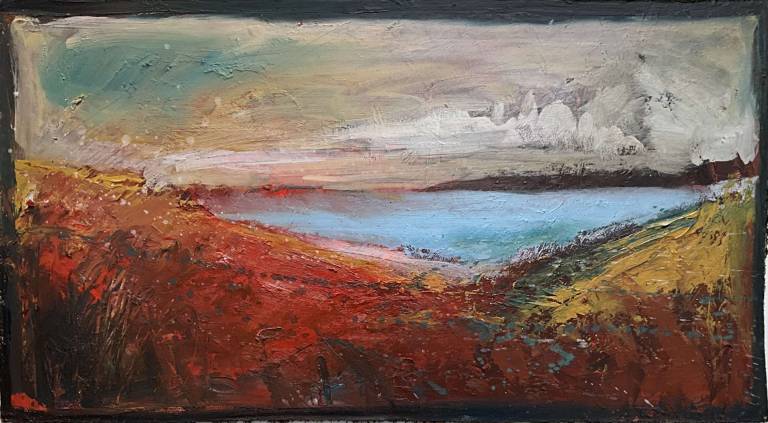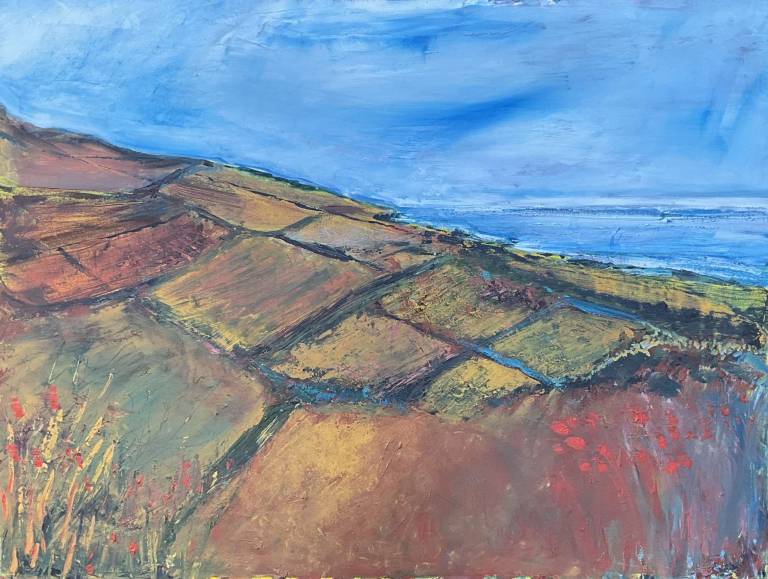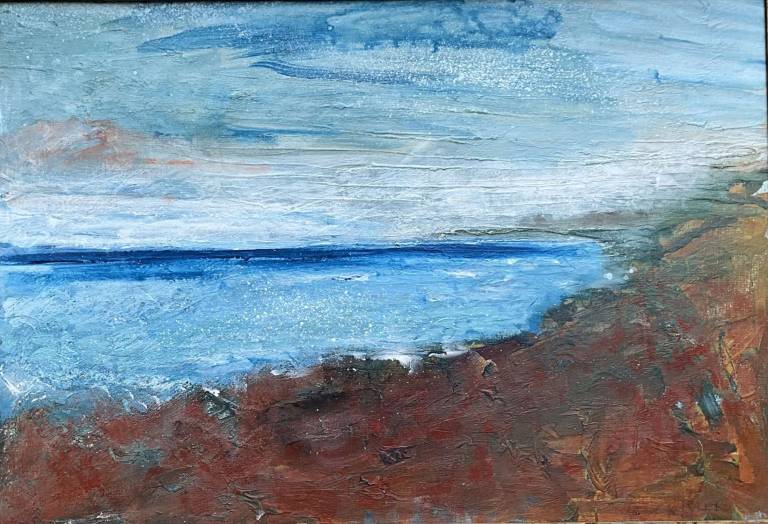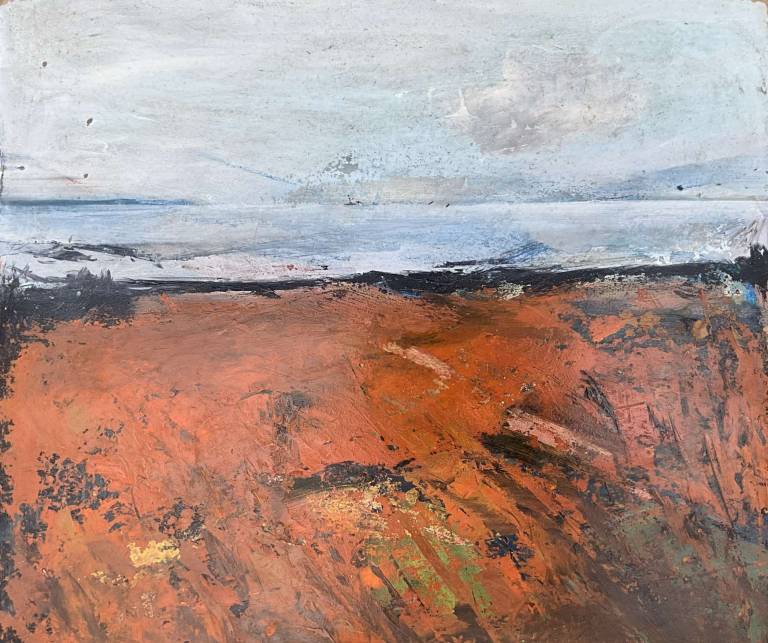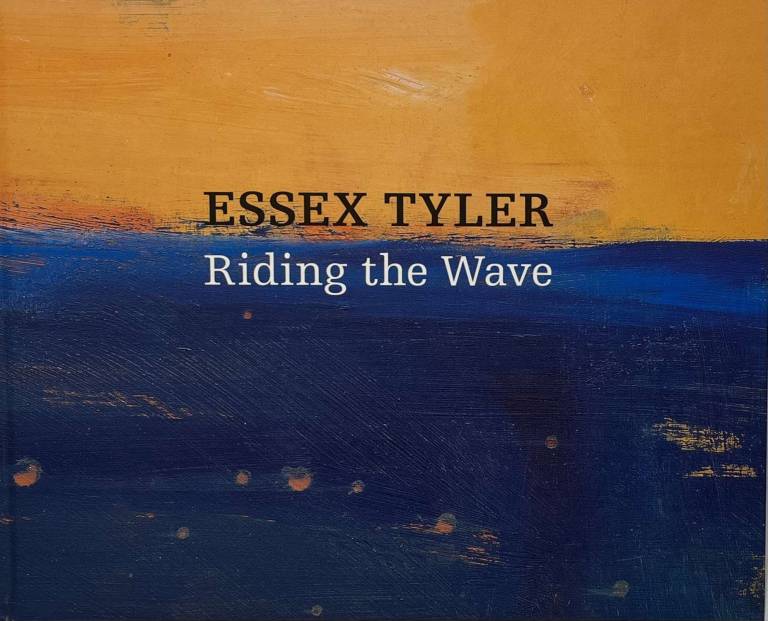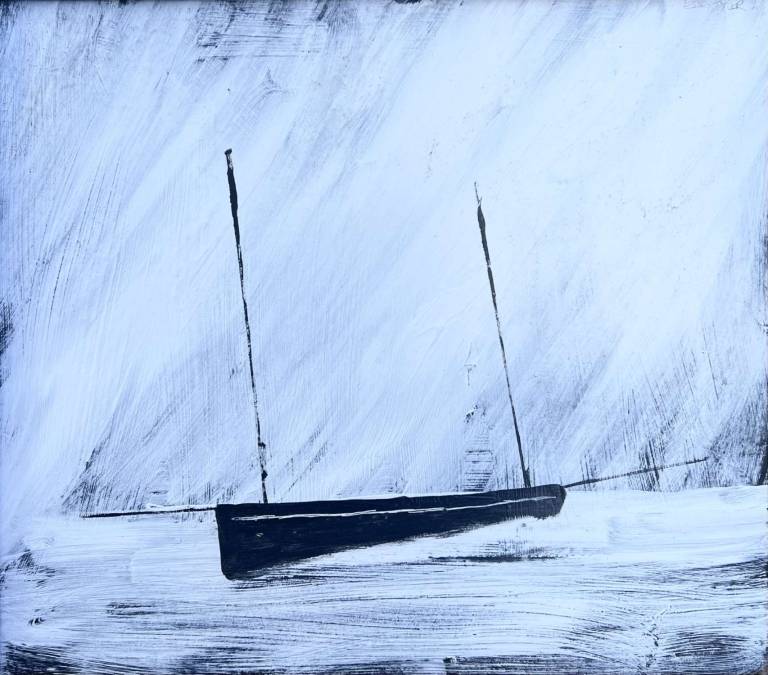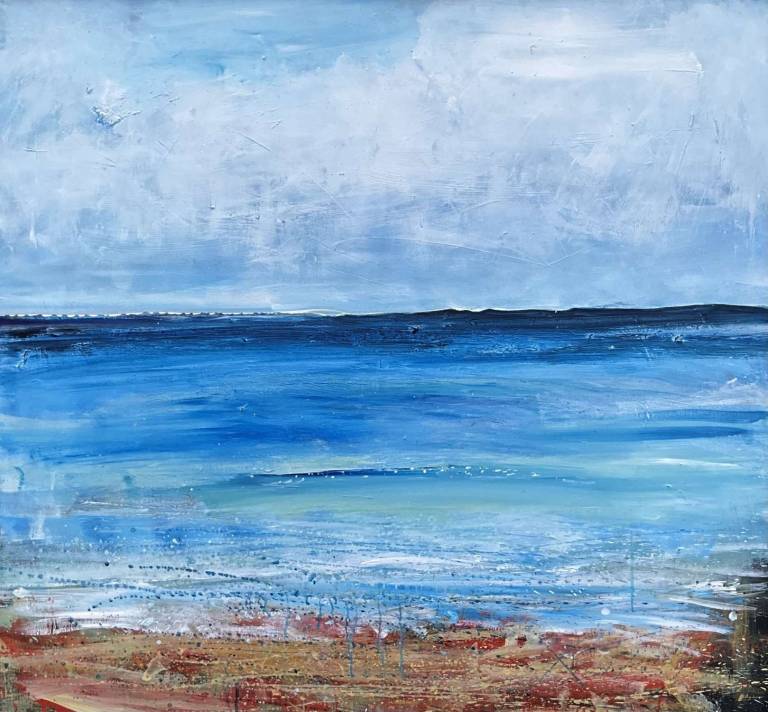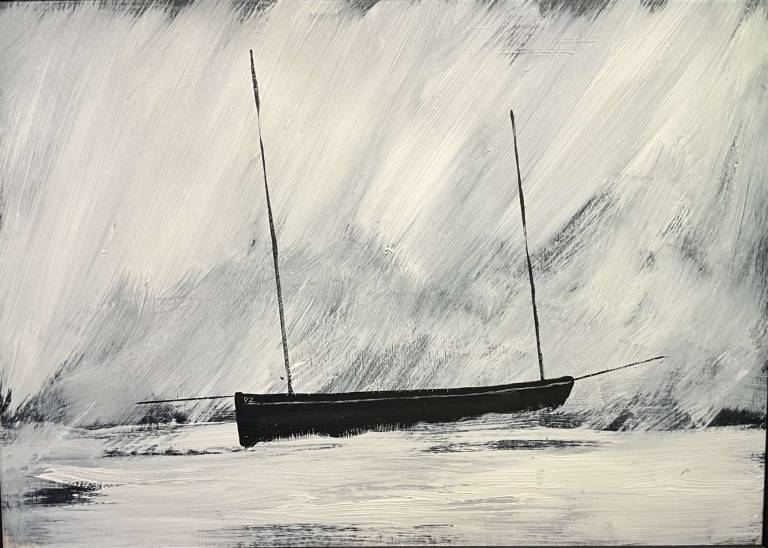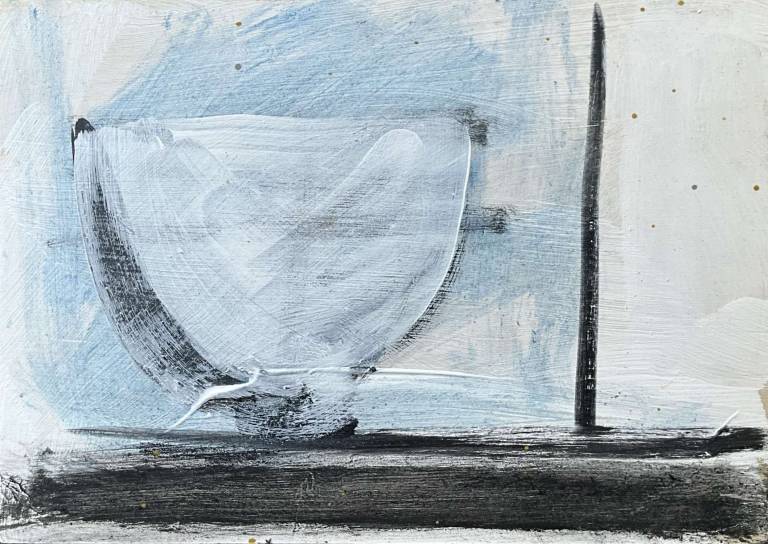Essex Tyler
Of the four elements – water, fire, air and earth - water is
the vital force in Essex Tyler’s work. Not surprisingly, given that his
identity as a surfer, sailor and fisherman bleeds in to his art. As a painter,
Essex brings together big liquid skies, the irascible Atlantic Ocean and the
copper-stained cliffs of West Cornwall in landscapes that move one step beyond
his contemporaries in capturing a quiet intensity, a kind of brooding – but a
celebratory brooding. Heron-blue skies weigh heavy on golden rocks that are
bursting treasure chests – but this is not sweet earth. It spills out in rough
coughs against the incessant forced medicine of the Atlantic Ocean. Sometimes
the bronze of fiery earth leaks into the sky and stains it. Essex first
established himself as a potter, so he knows the clays and metals that stain
his paintings intimately. It is this translation of the physicality of clay
forms and their firing into painting that makes his canvases so unique and
powerful. Raku pots, veined with cobalt, want to burst open like ripe fruit.
The textures are smooth and burnished, with intricate cracks appearing by
chance, a metaphor for life.
“Painting is like surfing. You do not get anywhere before
you have mastered the basics – spot the best waves, paddle out using the rip
currents, take off at the point of maximum energy, bottom turn, tube ride, exit
with style.” But, of course, after that, spontaneous and sometimes
unintentional movements can produce poetry on the waveface. Essex uses oils,
acrylics, beeswax and marble dust. Colours, tones and textures are repeated
over and over to work as building blocks, so that improvisation becomes
possible. Paint is pushed and pulled around the canvas, leaving traces that are
tethers, tracks for the eye to follow upward, across, to finally rest on a
deceptively still object, a symbol of shelter not just at the heart of the
storm but also at the heart of the calm. For one of painting’s key purposes is
to provide shelter from the anaesthetising calm that is the pervasive blandness
produced by a mundane culture.
I’ve watched Essex surfing on big greasy green waves all
around the south coast of Cornwall, just under the big toe of the foot of
county dipped in the Atlantic turbine, setting up a crisp bottom turn, adopting
great posture, flexing low into outlandish re-entries, followed by rifling
moves all the way to the shoreline, everything linked and coordinated. And now,
this same string of events passes from head and heart to brush and canvas, with
paint as the medium rather than the green Atlantic Ocean. In each arena,
liquidity is key – flow, movement, acceleration and pause, timing and
placement.
-
Autumn Penwith Moorland
£ 750.00 -
Carn Galva
£ 750.00 -
Ding Dong from Lanyon Quoit
£ 475.00 -
Ginny Iden
£ 525.00 -
High Tide Sennen
£ 850.00 -
Ladydowns near Zennor
£ 600.00 -
Lichen Coast
£ 575.00 -
Nanquidno
£ 850.00 -
North Coast
£ 3,500.00 -
North Coast
£ 1,250.00 -
Penwith Moorland
£ 1,250.00 -
Riding the Wave
£ 25.00 -
Scarlett Thread
£ 1,250.00 -
Sennen High Tide
£ 3,500.00 -
The Plough
£ 2,500.00 -
Winter Bowl
£ 375.00
